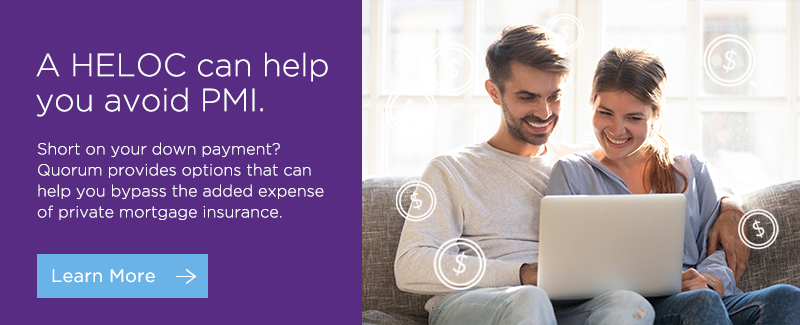For most of us, insurance helps cover unexpected medical bills, vehicle accidents or costly home repairs, and is a necessary part of modern life. However, one form of insurance that offers little to no benefit, is largely avoidable and often wholly unnecessary, is private mortgage insurance (PMI). What is PMI and why should you avoid it paying it?
What Is PMI and who is required to pay it?
Unlike insurance policies designed to protect you and your loved ones from life’s unexpected perils, PMI exists solely to protect the mortgage lender. In the unfortunate event you can no longer pay your mortgage and default on your home loan, PMI helps your lender recoup losses.
Lenders generally require home buyers seeking a conventional mortgage loan to secure PMI if they cannot, or choose not to, place 20% of a home’s total purchase price up front in the form of a down payment. For example, if the price tag of the home you have your eye on is $200,000, you would need to place 20%, or $40,000, down to avoid PMI.
If you are unable to avoid PMI, expect to add 1% of the home’s price tag to your loan. Using the $200k home example above, PMI costs would add up to around $2,000 per year, or about $165 per month. This additional cost rolls into your monthly mortgage payment along with the principal, interest, homeowner’s insurance premiums and property taxes. Purchasing a home is a major financial decision. It pays to conduct extensive research and run scenarios through a home mortgage calculator to determine the effect PMI has on your monthly payment.
Why should you try to avoid paying PMI?
Quite simply: every penny counts. Most of us cannot afford to squander hard-earned cash on unnecessary, and avoidable, expenses. Before paying PMI, know the facts:
- Is PMI a necessary expense? Regardless of your credit score or financial history, PMI is typically only mandatory if you cannot, or decide not to, pay a 20% down payment on your home purchase. Why is this? Lenders consider it risky to loan funds for over 80% of a home’s estimated value.
- What benefits does paying PMI offer a homebuyer? Since the purpose of PMI is to protect a financial institution in the event you default on your home loan, it offers no real benefit to you as a homebuyer.
- Can I cancel PMI? As you make monthly mortgage payments, the principal on your loan will decrease and you will build equity in your home. At some point, your home’s value compared to the amount you owe will drop below the 80% mark. When you reach this milestone, you should request to have PMI cancelled. Beware, though, that many financial institutions require an additional professional appraisal to document the home’s value. This appraisal may cost you between $400-$750.
Strategies to help avoid paying PMI
Since PMI offers no tangible benefit to you as a homebuyer, you should try to avoid paying it if at all possible. The following strategies may help prevent you from shelling out money unnecessarily each month to cover PMI costs:
- Save for a 20% down payment: Saving 20% of a home’s purchase price is difficult for many would-be homebuyers. However, by tucking away a portion of your monthly income and investing in a term account, or placing your money into one or more interest-generating savings accounts, you can watch your bottom line grow as you inch closer to reaching your financial goals.
- Piggybacking: Another option for homebuyers who cannot avoid PMI by placing a sizeable down payment is to utilize a “piggyback mortgage,” also called a simultaneous loan. Through this method you take out another loan, in addition to your primary mortgage, to secure the funds you need for a 20% down payment and, thus, avoid PMI costs. Some financial institutions refer to these as 80-10-10 loans since you borrow 80% of the home’s value in your primary mortgage loan, then take a loan for 10% of the down payment while you supply the funds for the other 10%.
Even if you are unable to avoid paying PMI altogether, you may be able to minimize the burden of paying PMI over the long haul. You can do this by making extra mortgage payments to decrease your loan-to-value ratio (a number that describes the size of a loan compared to the value of the property securing the loan, expressed as a percentage), refinancing your mortgage, or even seeking a new appraisal of your home to reassess its value.






Comments Section
Please note: Comments are not monitored for member servicing inquiries and will not be published. If you have a question or comment about a Quorum product or account, please visit quorumfcu.org to submit a query with our Member Service Team. Thank you.